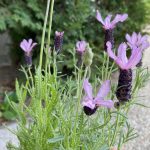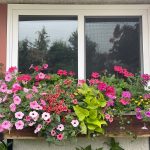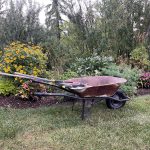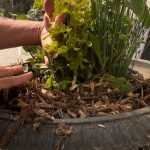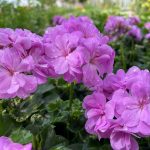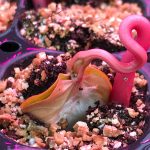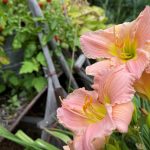If you’re looking to spice up your front entry, consider a planter!
One of the best things about planted containers is their versatility; planters can be grown anywhere, and there is one will work in your entrance. There are many different ways to put together a front door planter that will remain healthy and beautiful, but I’ve put together my favourite front door planter ideas that work really well for any entrance!
This blog will cover the following:
- Four things to know before you plant or purchase a front door planter
- Front door planter design and colour ideas
- The best 6 plants for your front door planter
- How to plant a front door planter step by step
- How to care for a front door planter

Want the inside scoop on more gardening tips? Get early access to all my blogs and exclusive content by signing up for my newsletter!
Four Things to Know Before you Plant or Purchase a Front Door Planter
Front door planters add vitality and interest to home entrances and can be easily customized to fit your style, whatever it may be.
Let’s talk about 4 things to know before you dig into the soil or purchase anything.
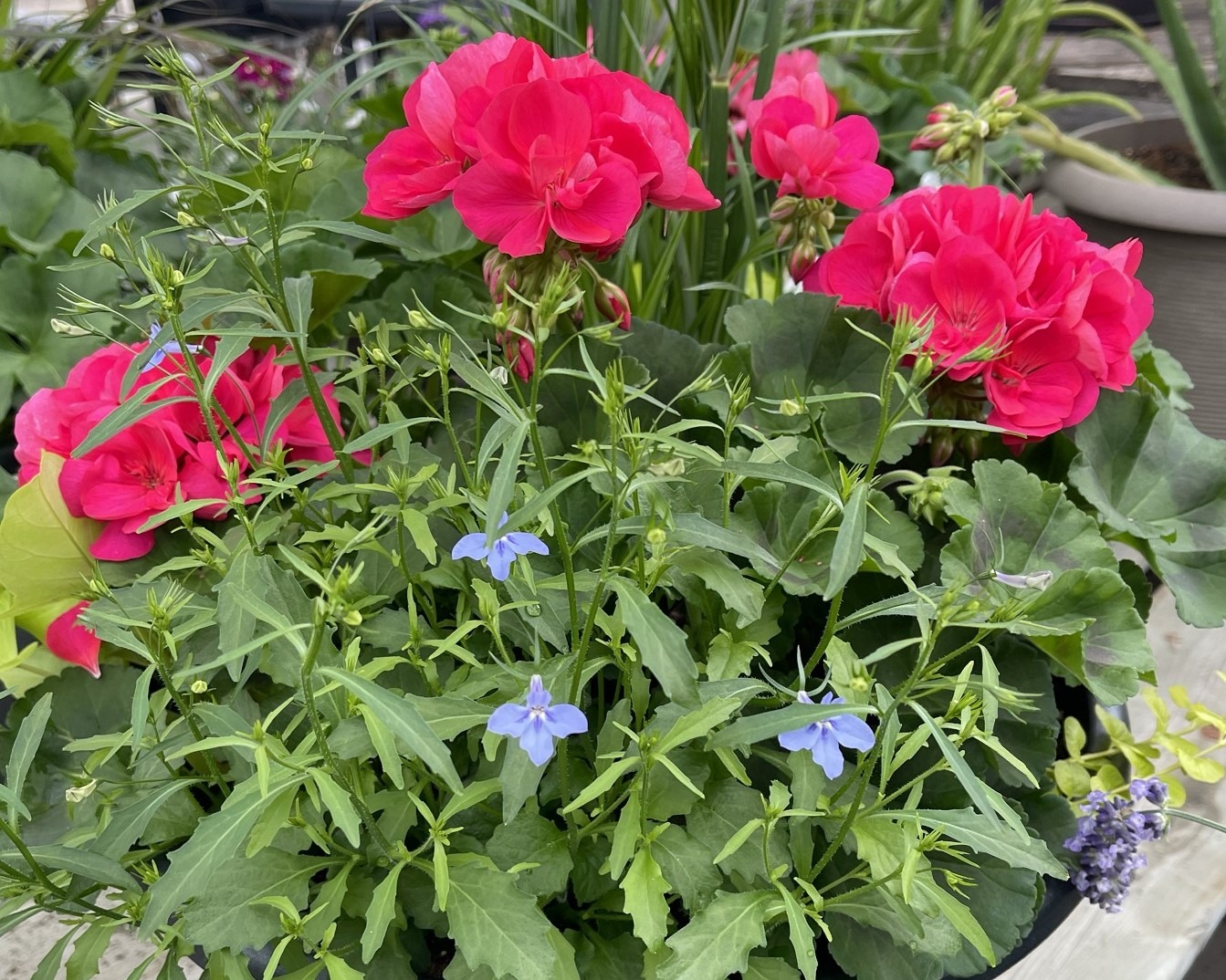
1. Determine the Purpose for Your Front Door Planter
Establish why and where you’d like the front door planter.
Do you want the planter to add colour and light up a shady space? Do you want it to welcome others to your home? Would you like the planted container to convey calm? Will the planter be part of a seating area?
The answers to these questions will guide decisions about which plants are right your the space.
2. Know how Many Hours of Direct Sunshine Your Front Door Planter will Receive
In the plant world, light is life. Sun exposure determines which plants will grow in a gardening space.
Watch your growing space and see how many hours of sunshine it gets.
I no longer ask whether an growing area is east, west, south, or north-facing in relation to a dwelling because many factors affect sun exposure.
You would naturally think that a south-facing deck has a lot of sunshine, but what if that deck is shaded by a huge tree? That tree no longer makes the deck ’a south exposure’.
Determine where the sun first hits the front door planter, how long the sunshine lasts, and when the sun no longer shines on that spot.
Check for factors that create shade like buildings, fences, posts, and overhangs. What and see if the sunlight filters through leaves, which also decreases available light.
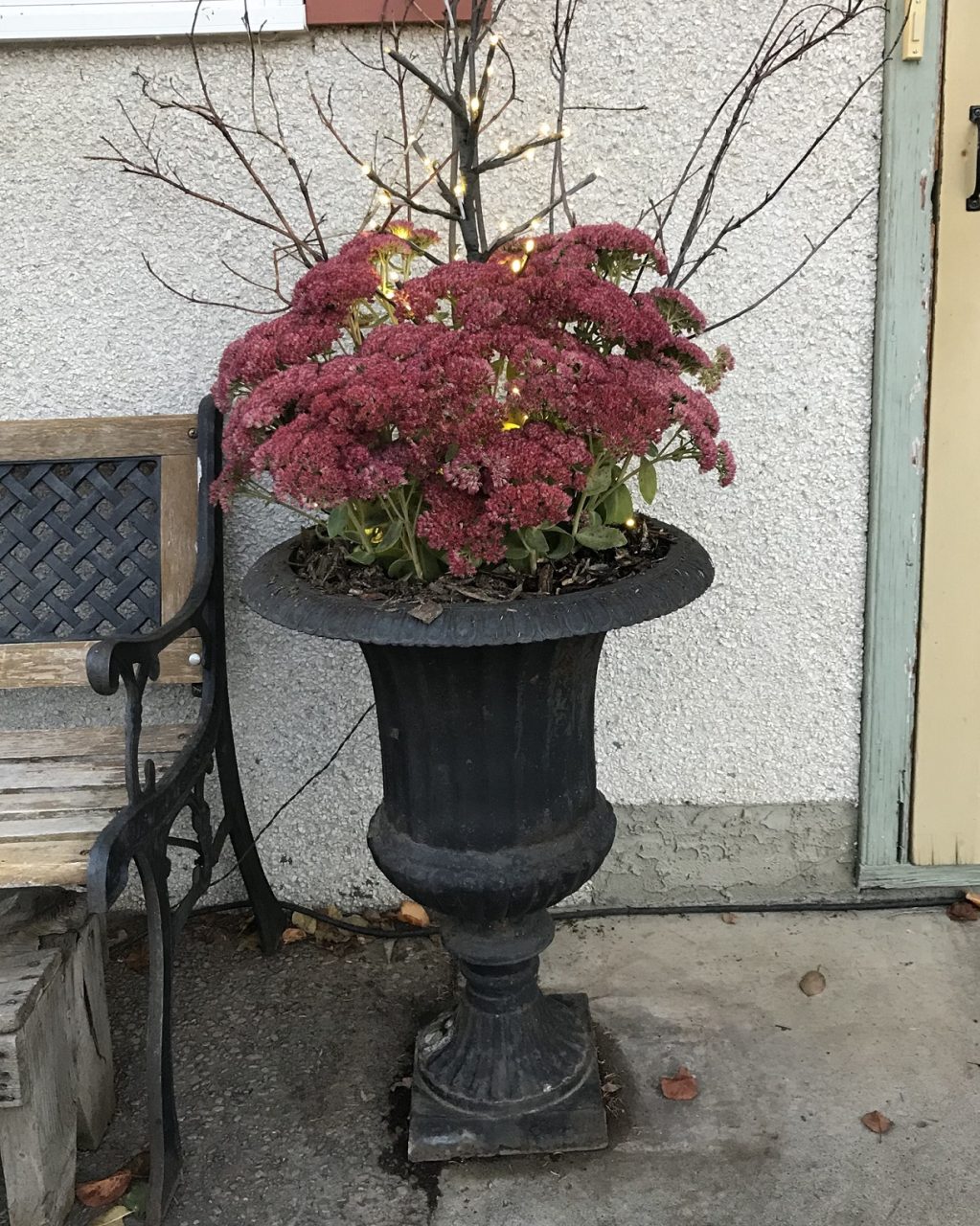
3. Know how the Front Door Planter will be Viewed
Think about how the planter will be viewed because the design strategy is influenced from many angles the container will be seen.
Will you see this container just from the front? Will it be placed next to a wall or a railing? If so, this will be a faced arrangement.
In faced arrangements, the taller plants are placed at the back of the planter with the filler and trailing plants in front.
If the planter is seen from all angles, it will be a round arrangement.
In rounded arrangements, the tallest plants are placed in the middle and the others are planted around the center focal point.
4. Determine how Wind will Affect the Front Door Planter
Wind can be a crazy thing. It can shred broad leaves and dry out soil faster than you imagine.
Learn how wind moves in and around your front door growing space.
How sheltered or exposed your gardening space is to wind will determine the varieties of plants that will work best.
Related: How To Plan & Design a Garden in 4 Simple Steps
Front Door Planter Design and Colour Ideas
Designing and creating your planted container can be formidable the first few times you do it.
The ‘Thriller, Filler, Spiller Planter Method’ is a simple, tried and true system gives a framework to for designing containers.
The Thriller, Filler, Spiller Design Method for Front Door Planters
The possibilities for creativity with the ‘Thriller, Filler, Spiller’ system are endless – make sure to match plants with the same environmental needs like sun exposure and water requirements, so they can grow and thrive together in the same pot.
Here’s a quick rundown of the Thrillers, Fillers, and Spillers:
The Thrillers
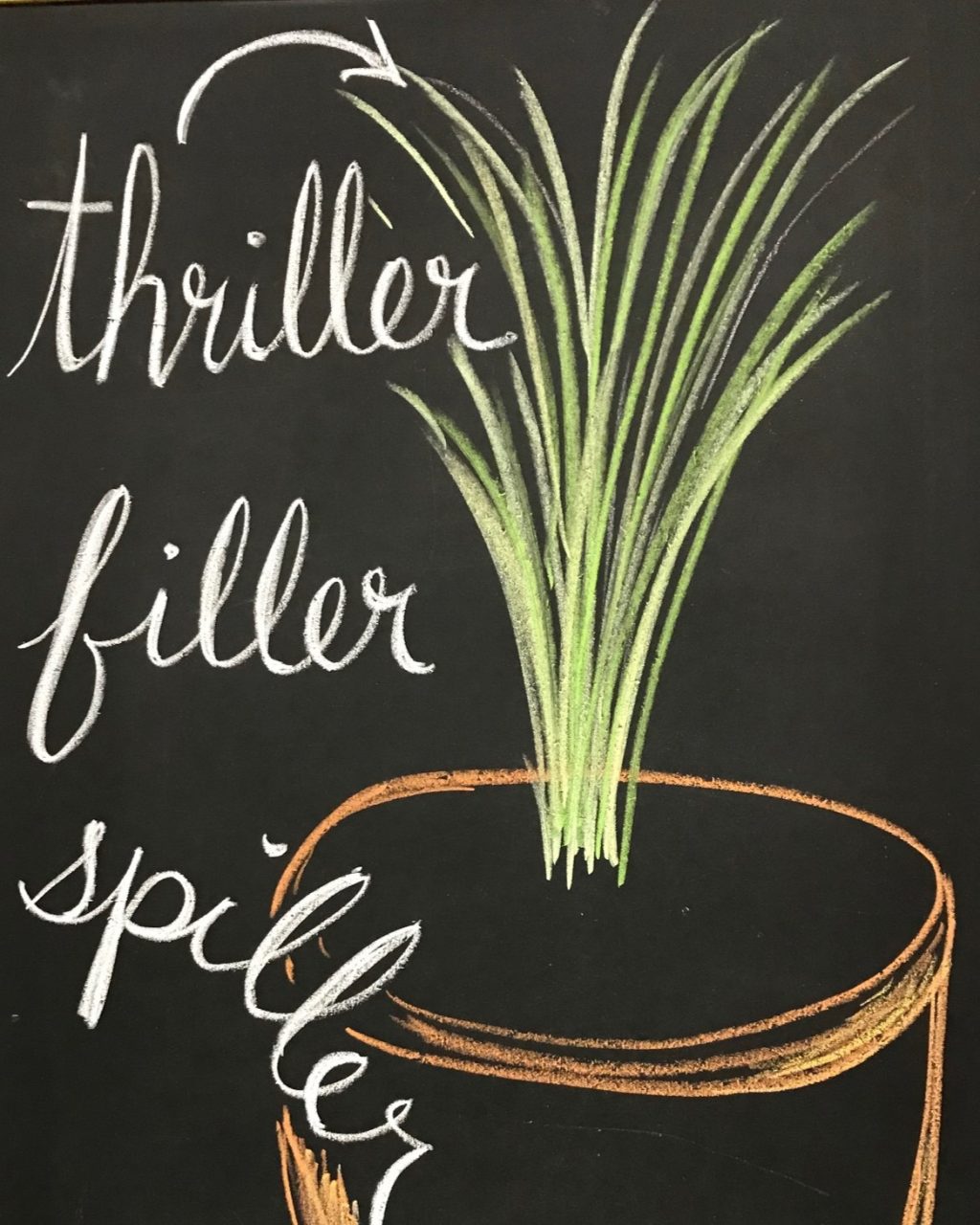
‘Thrillers’ are tall, stately plants that give height and structure to a container.
They draw the eyes upward and define the high point, or apex, of a container planting.
Examples of Thrillers are Cannas, Dracaenas, Ornamental Grasses, or trellises with climbing vines.
The Fillers
‘Fillers’ are medium-sized & plants that fill in the center portion of the planter.
Fillers include plants like Begonias, Hostas, Impatiens, and Coleus for shade; and Geraniums, Gazanias, Marigolds, Nasturtiums, Petunias, Salvia, and Zinnias for sunny places.

The Spillers

‘Spillers’ are plants that cascade over the edge of the container. Spillers extend and lengthen the container planting.
Spillers include Bacopa, Black Eyed Susan (Thunbergia), Lamium, Nepeta, Kenilworth Ivy, Lamium, Million Bells, Silver Nettle Vine, Scaevola, Spanish Daisies, Sweet Potato Vine, and trailing Verbena.
When I plan fillers for a container, I usually choose 1 foliage (leafy) plant and 2 flowering plants, but that can change if more foliage or flowers work better for you.

Want the inside scoop on more gardening tips? Get early access to all my blogs and exclusive content by signing up for my newsletter!
How to Choose Colour Combinations for a Front Door Planter
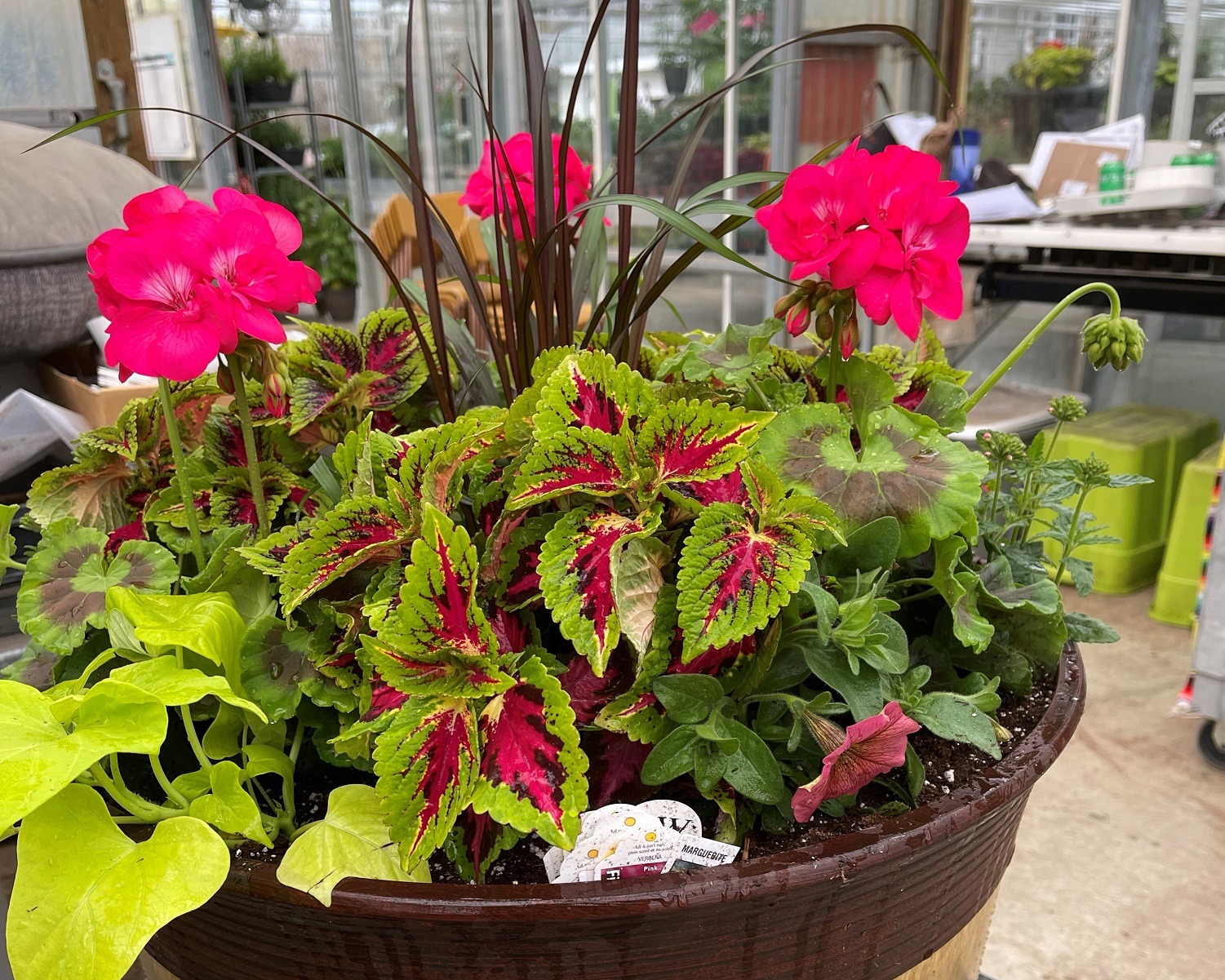
Matching colours for planted containers is more straightforward than it looks.
I always say designing containers is like colouring your own butterfly.
And sometimes we try to put plants together following too many rules, like only using an odd number of plants or using the colour wheel correctly for complimentary and contrasting colours. In my experience this only causes stress.
Let’s put those rules aside, and I’ll share with you what I do.
When I design a container, I start with a plant or a flower that I’m crazy about. It could be a flower with unique leaves, or a beautiful foliage plant.
Using the above photo, I’ll illustrate what I do.
The arrangement in the photo is a rounded arrangement that is viewed from all sides.
The plant pairing in the photo above started with the Coleus sporting vibrant pink in the middle of the leaf highlighted with burgundy tones and a lime green leaf border.
From that Coleus, I brought plants into the colour combination that accented different hues in its leaves.
For the Thriller, I chose a tall, dark grass with burgundy tones.
For the middle zone, I found bright pink Geraniums for fillers that matched the tones of the Coleus leaf. Then I alternated the Geraniums and Coleus around the grass.
And for Spillers, I chose lime green potato vines (Ipomoea) and pink petunias to pull through the lime green and pink hues to trail over the planter’s edge.
When deciding on groups of plant colours, I always try to make the composition colourful but not gaudy.
Too many colours and textures meshed together in a planter create a very busy colour palette that makes it difficult to see the flowers.
I’ve always found that if you keep the colour combination to 3 primary colours or shades, the colours will blend and grow together in a restful and inspiring arrangement.
The Best 6 Shade and Sun Annual Plants for Your Front Door Planter
Here are my favourite shade and sun-loving plant groups that make amazing containers.
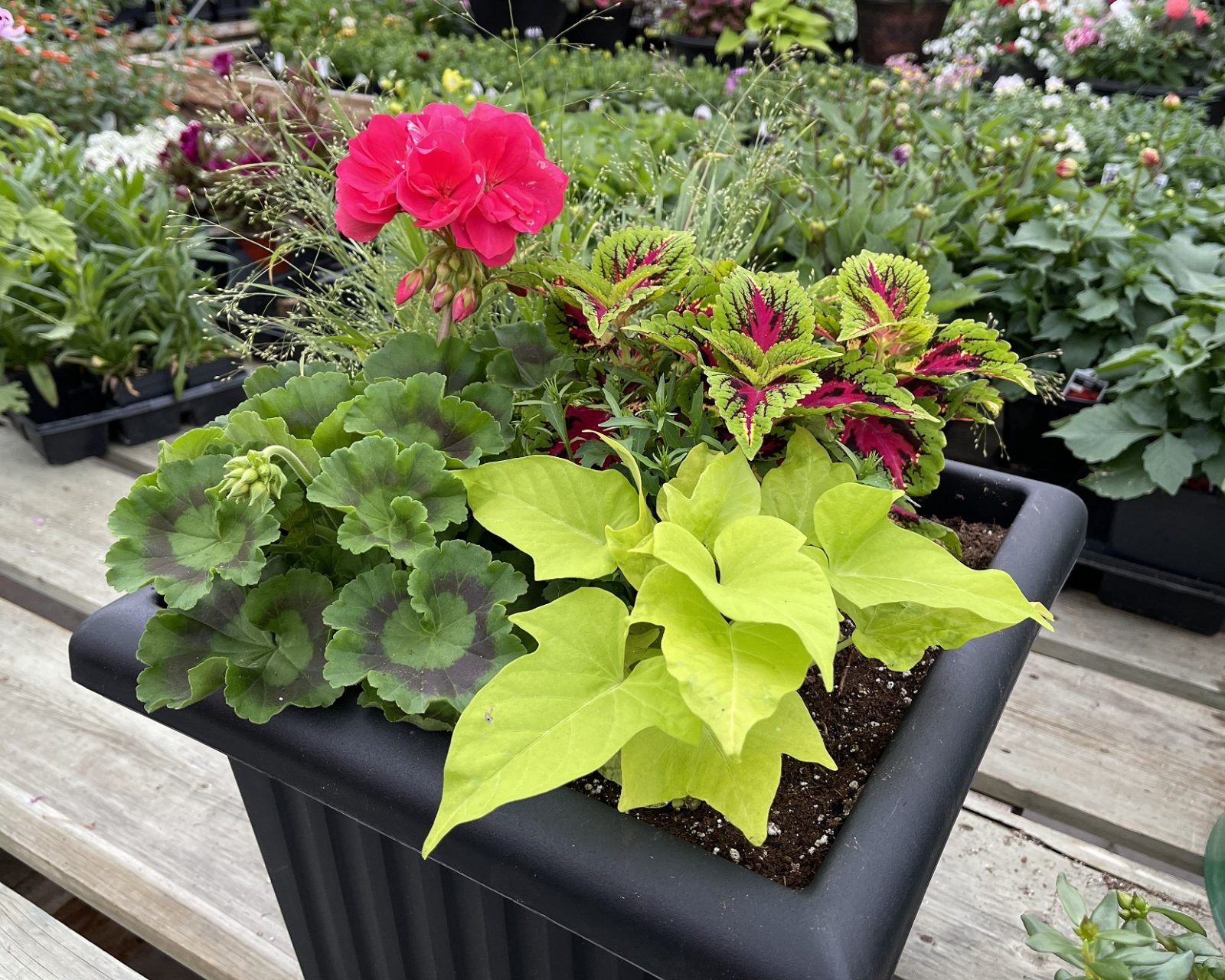
The Best Performing Shade Plants for Front Door Planters

Begonias
Begonias are perfect for shade gardens.
From the glossy winged Dragon Wings and Canary Wings to Tuberous Begonias with bright, fully double flowers, and Solenia Begonias with rose-like flowers; all add colour power.
Begonias can grow upright or trailing, and regardless of type, they light up shady growing spaces.
Coleus and Shade Foliage
Coleus and other leafy foliage is a class of annual plants that has significantly expanded in the last while.
There are Coleus plants specifically for sun or shade, and some will grow in both exposures.
Ipomoea (Sweet Potato Vine) is a fantastic addition to shade containers.
Years ago people would ask why someone would ever use a plant with just leaves. Now we know.
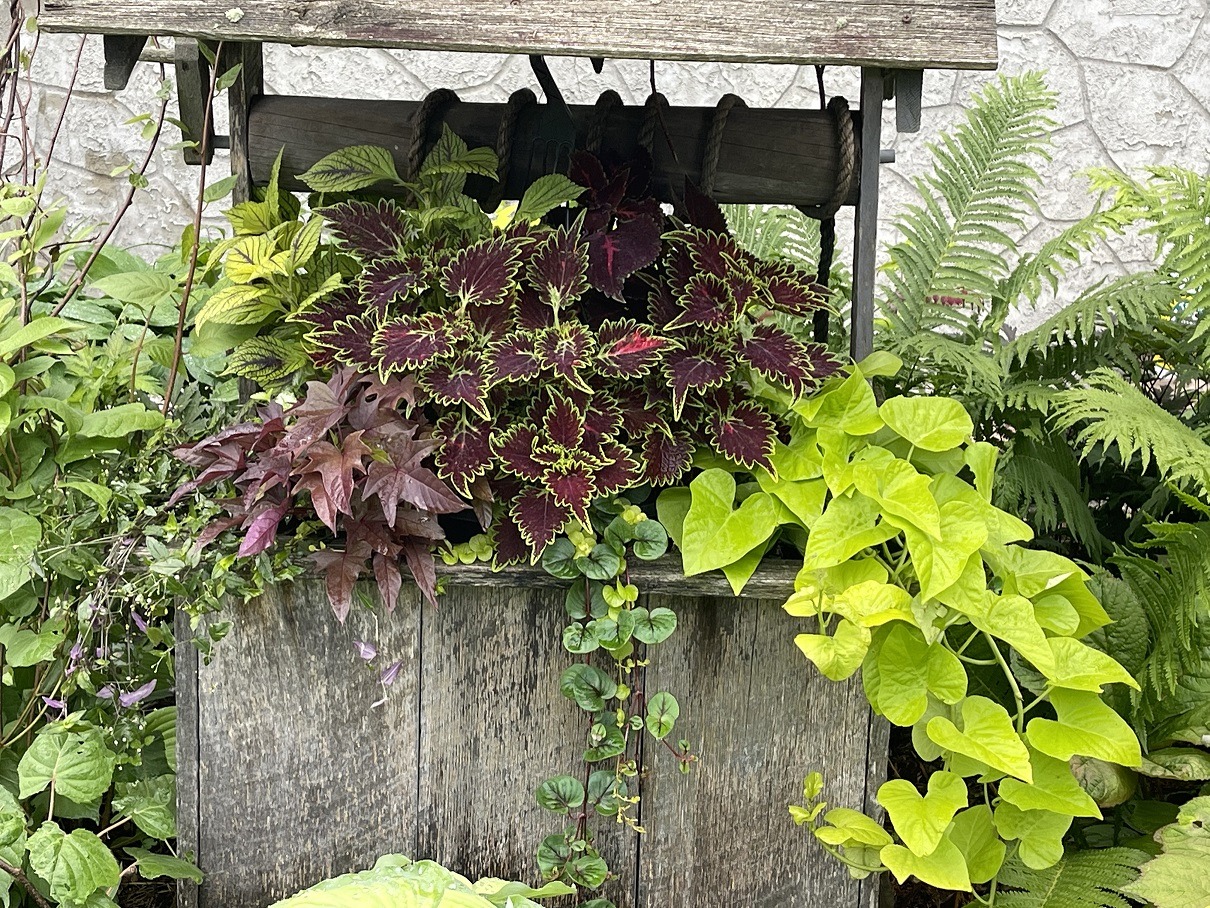
Coleus colour combinations in the background.

Scaevola (Fan Flower)
Flowering shade plants add highlights and low lights to container plantings as they lengthen planter arrangements.
Scaevola (Fan Flower) grows well in sun and shade, so no matter where you grow it, it is a win.
Scaevola resembles a candelabra as it elongates. It is available in purple, white, pink, and yellow.
The Best Performing Sun- Loving Plants for Front Door Planters
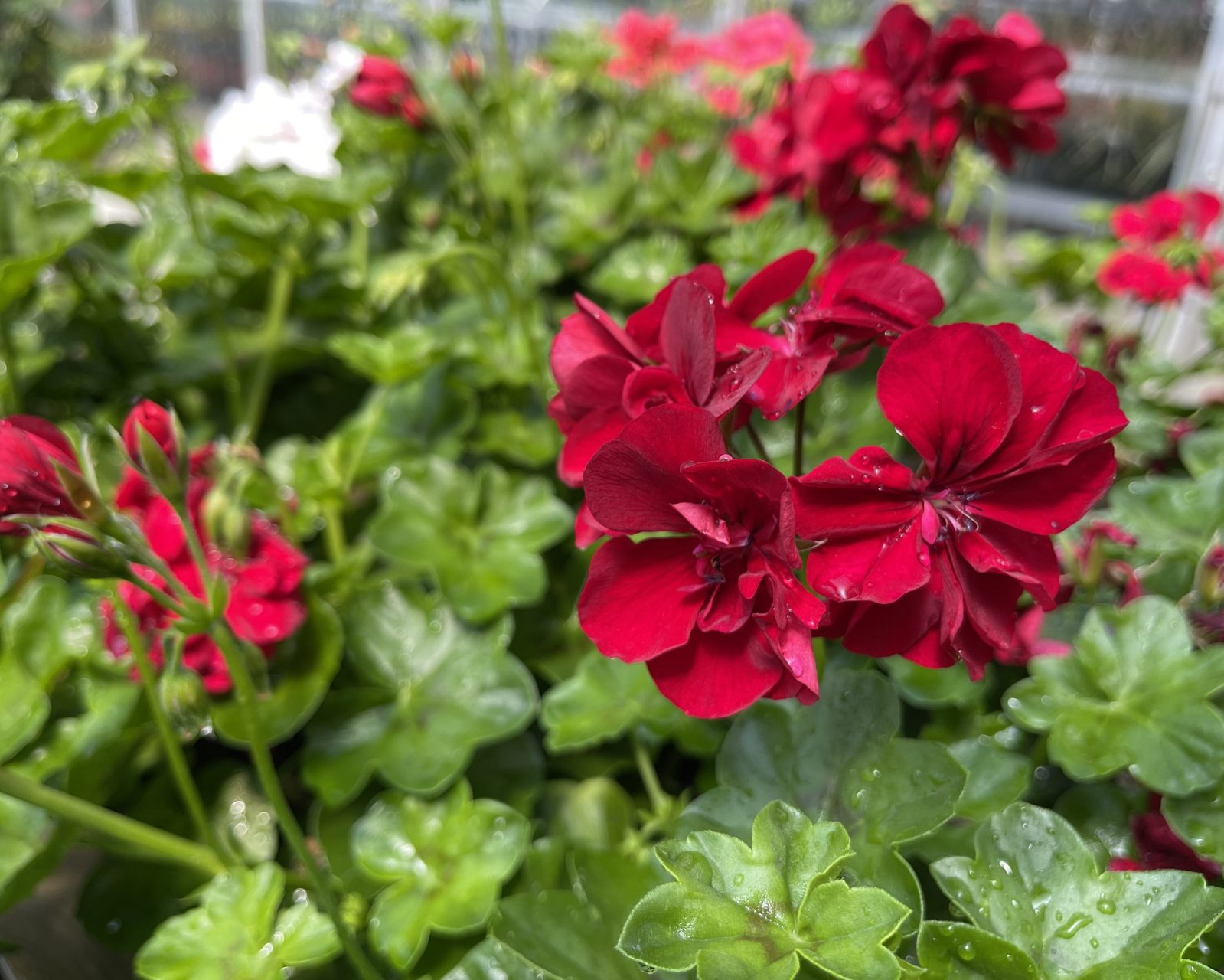
Geraniums
Geraniums are hardy, tough, colourful sun-loving plants.
And they are no longer that old-fashioned, boring red flowered plant that would put you to sleep.
Geraniums are available in an extensive array in vibrant colours, including orange.
Some geraniums trail over pot edges, and others stand tall and stately.
Check out this blog for all the details and Geranium options available.
Ornamental Grasses and Cannas
Ornamental Grasses and Cannas add stature, height, texture, and colour to front door planters.
Both are available with solid and variegated leaf options.
Grasses can tolerate windy conditions, but Cannas require sheltered environments as their leaves will shred and the stalks will eventually be stripped bare.

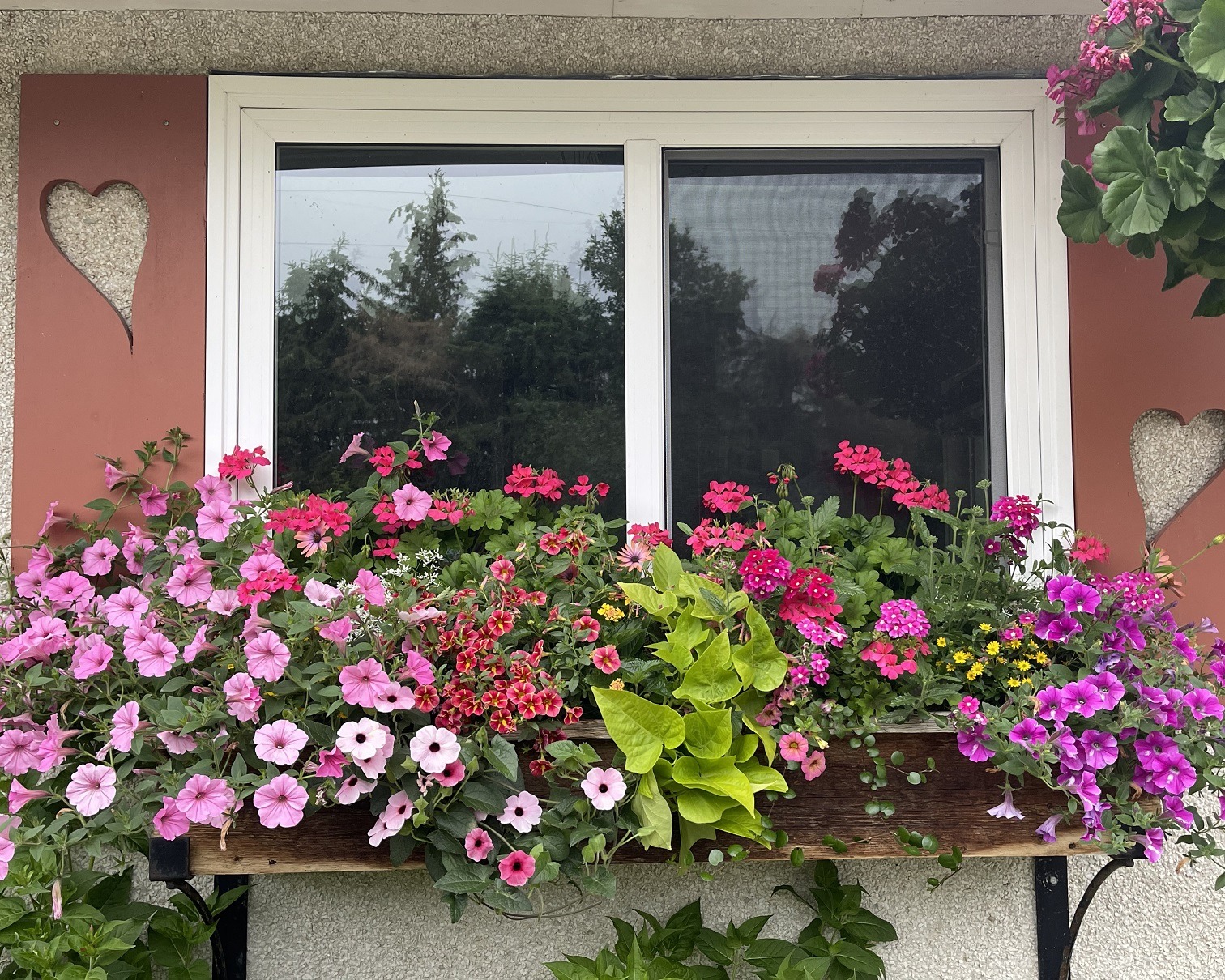
Flowering and Foliage Spiller Plants for Sun
There are many brilliantly coloured cascading flowering and foliage plants to finish off a front door planter.
Great performers in this category include Calibrachoa (Million Bells), Petunias, Scaevola (Fan Flowers), Trailing Verbena, and Thunbergia (Black Eyed Susan); fantastic foliage includes Helichrysum, Ipomoeas (Potato Vines) and Lysimachia varieties.

Want the inside scoop on more gardening tips? Get early access to all my blogs and exclusive content by signing up for my newsletter!
Free Downable Chart to Design Your Next Front Door Planter
I created mix-and-match plant charts to help with your front door planter ideas.
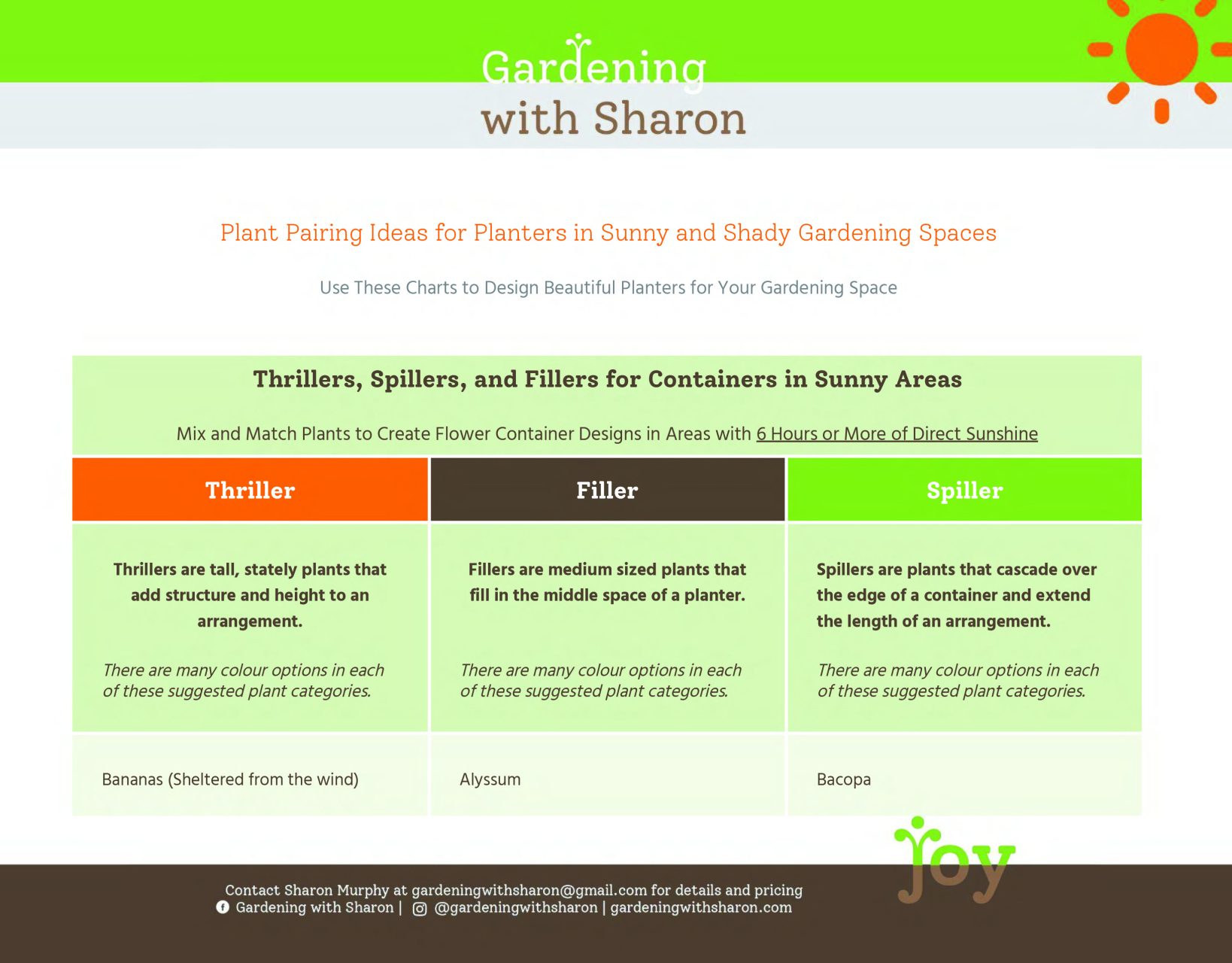
If your gardening area is sunny, choose from the chart for sunny areas that get 6 hours or more of direct sunshine, and if your front door planter is in a low light area, choose from the chart shady areas that receive 4 hours or less of direct sun daily.
Pick a ‘Thriller,’ then choose ‘Fillers’ and ‘Spillers.’
Pick 1 thriller, 3 fillers (they can be all the same or a combination), and 3 spillers (pick a blend of foliage and flowering) for a place start and modify as needed. For example, you may have a large planter that needs more fillers and spillers.
How to Plant a Front Door Planter Step by Step
Dig in with me as I plant up a flower container!
Before you begin planting, check that your empty planter has drainage holes.
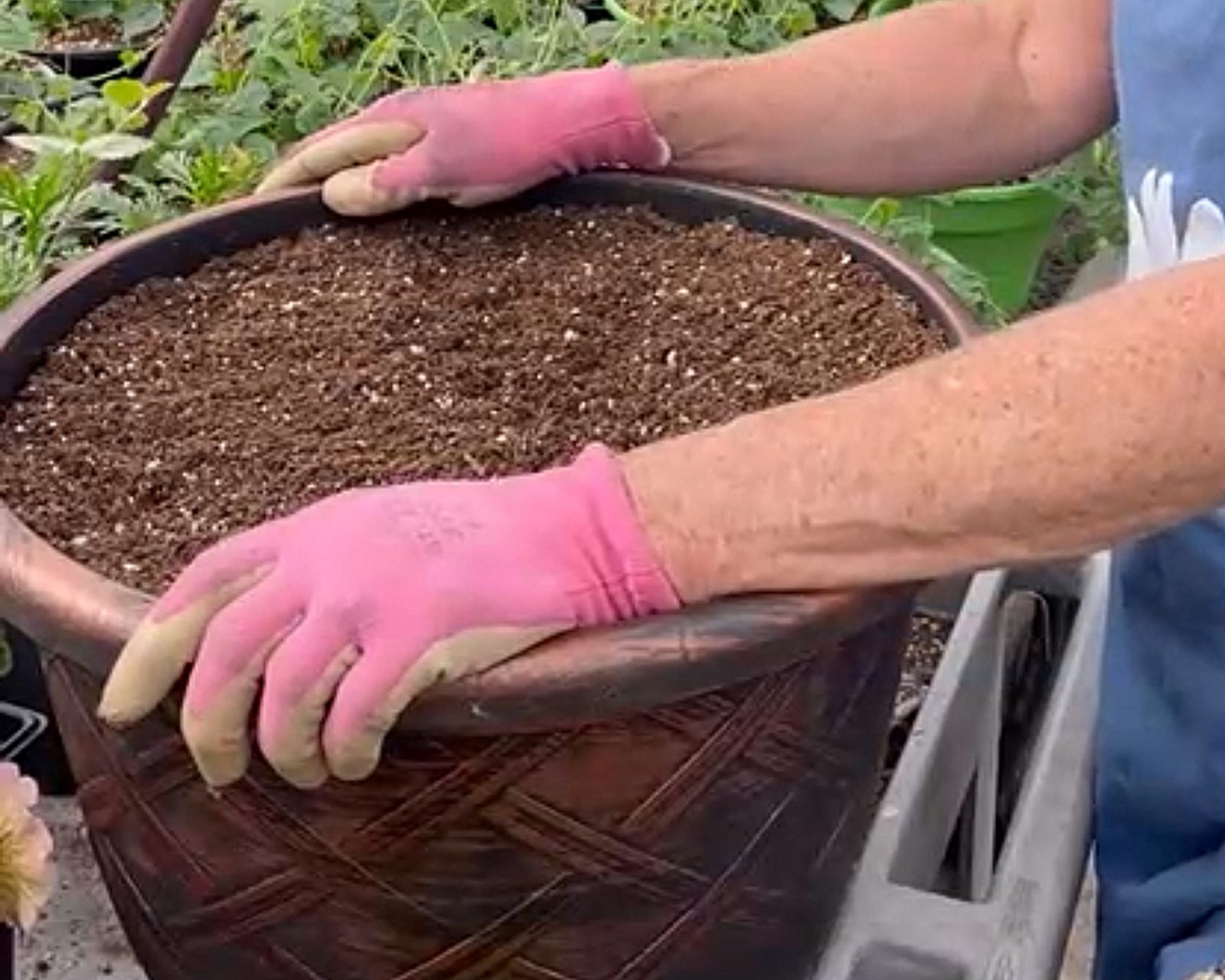
Next, fill the planter with good quality soil that holds nutrients and drains well is foundational to successful flower planters.
Don’t use garden soil for containers; it is too heavy and doesn’t allow the root metabolic activity needed in planters.
Fill your empty container to within 7.5-10 cm (3-4 inches) of the rim. This soil level will rise as plants are added to the planter.
As you work your design, you can place the potted plants on top of the soil. It is simpler to work with plants in their pots until you decide on which ones to use.
As you plan your arrangement, remember to factor in the mature size of each plant. If the container is overstuffed at planting, the plants will get stretched and spindly and stop flowering as they compete for light, space, and nutrients.
Remove the plants from their pots as you plant them individually so the roots don’t get dried out.
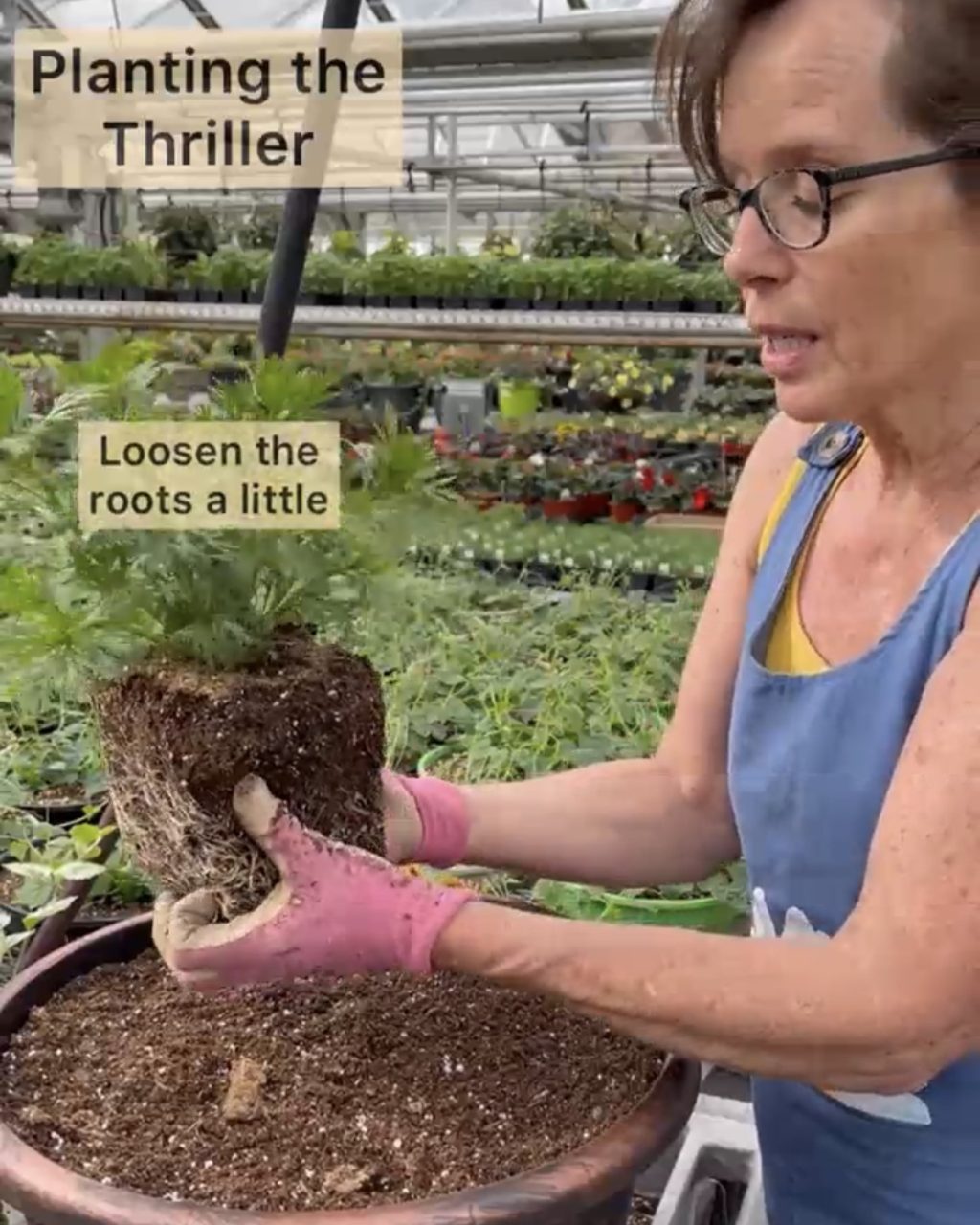
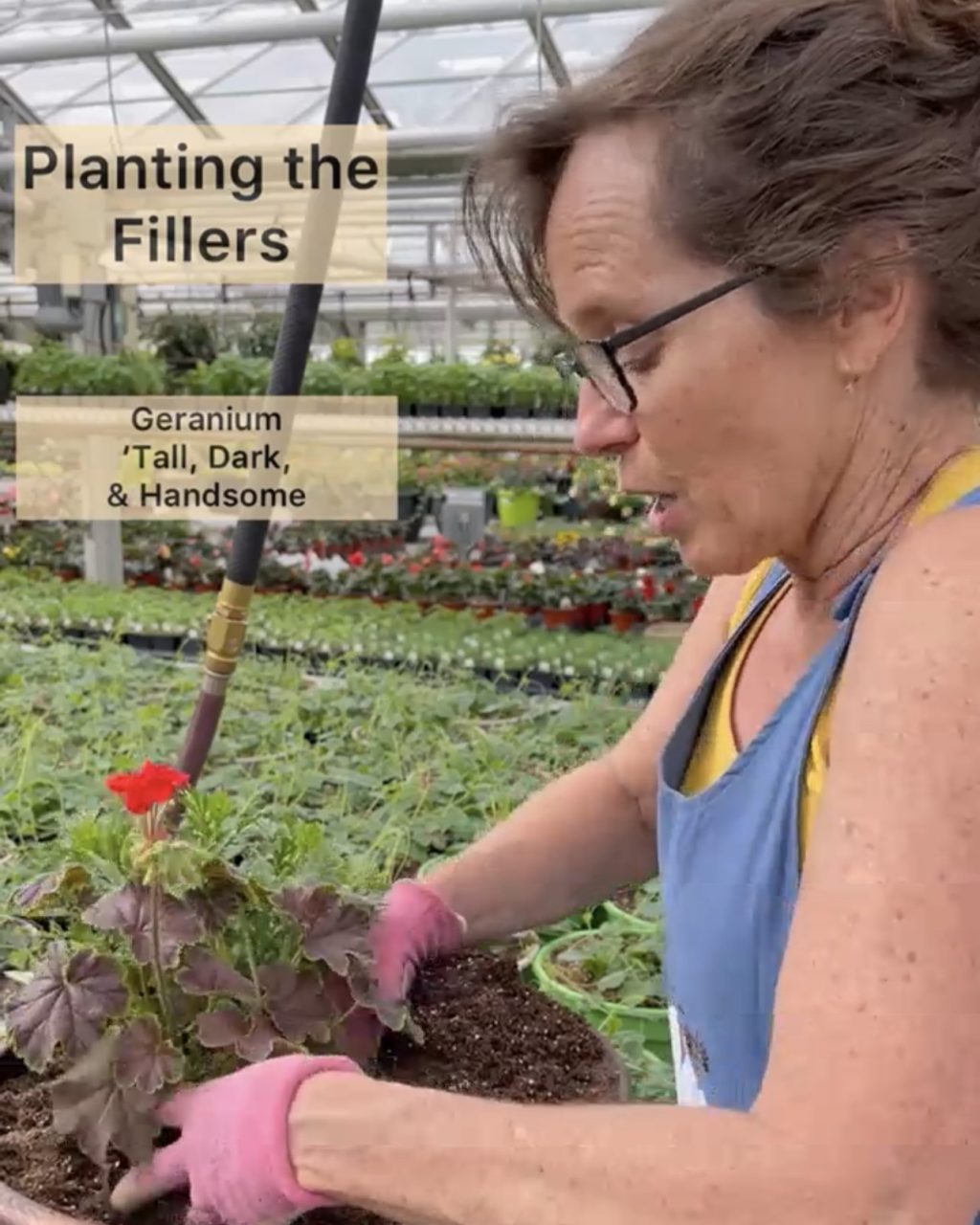
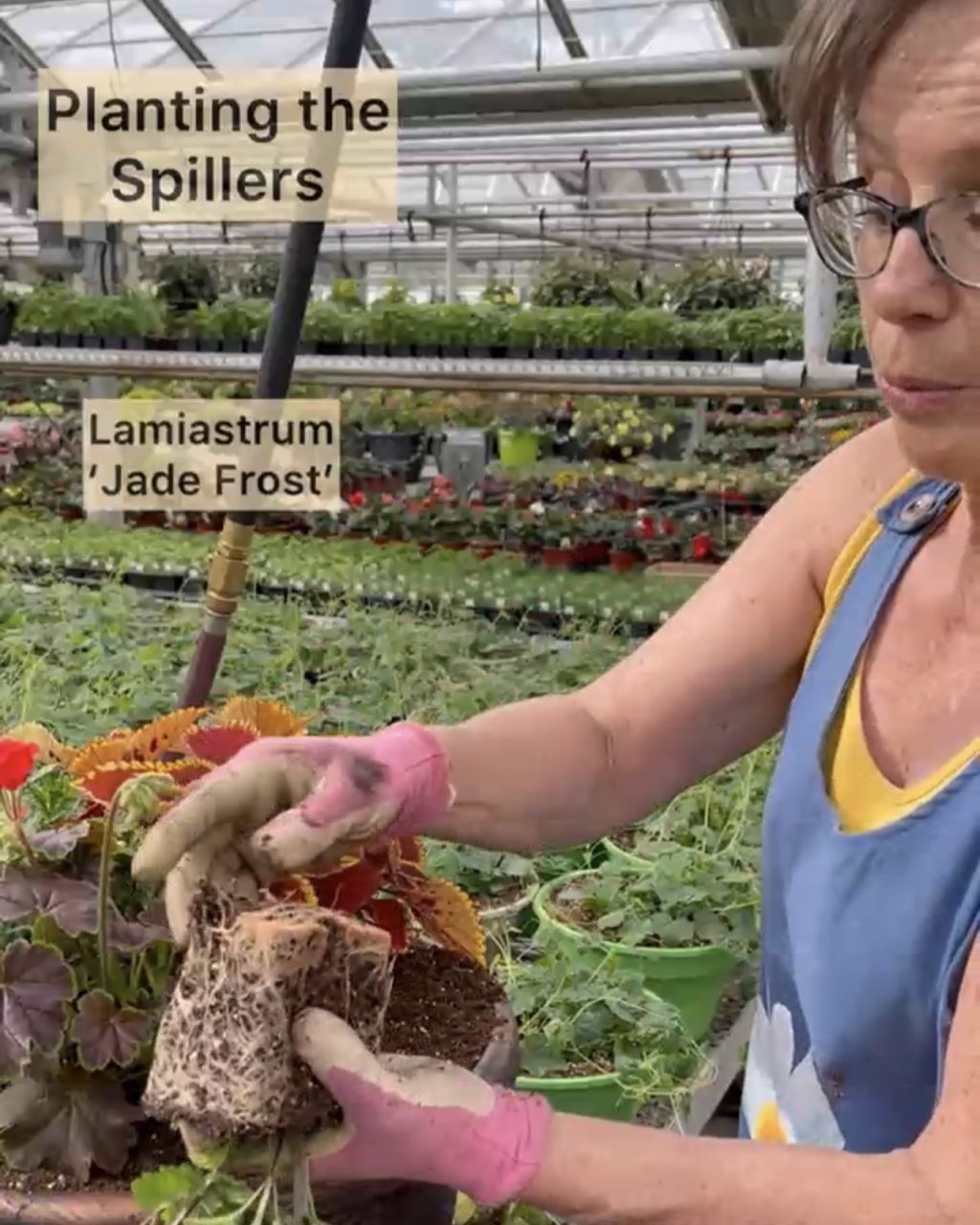
With each plant, dig a hole approximately the size of the pot, gently loosen it from the pot by inverting it, fluff the roots a bit, and place it in the soil.
There’s no need to press the plants in and compress the soil because, I promise you, they will not get up and move to another city. In addition, packing the potting soil around the roots destroys valuable air spaces that hold water and air for root metabolism.
Continue with this process until all plants are in place. You may need to fill in some soil to bring the level up to 2.5-5 cm (1-2 inches) of the top of the pot. The soil will settle when after watering.
Always give the plants a generous drink of water after you disturb their roots to make sure they stay hydrated.
How to Care for A Front Door Planter
Keeping a front door planter healthy and looking good is simple and doesn’t take much time, it just requires a consistent care.
Use this link to access my blog, How to Keep Hanging Baskets & Flower Containers Thriving all Season, for a detailed walk through the steps of complete planter care.
Bring Your Front Door Entrance to Life with a Planter!
Front door planters add vitality to an entrance that will make it sparkle. If you’re looking at some empty planters and just don’t know where to start, this guide is a fantastic place to start!
Front door planters are adaptable to any location, sun or shine, and can be easily customized to fit your style and purpose. If you have any questions about container gardening, or gardening in general, check out my other blogs! If you still can’t find your answer, you can reach out directly!
©Sharon Wallish Murphy ©Gardening with Sharon




